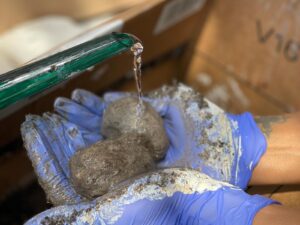In the conversation space, companies are always encouraging others to do something to contribute to the cause. Oftentimes, these actions stop at simply “raising awareness”, and understandably so; when you’re only one individual, how can you possibly do anything substantial enough to make a dent?
Here’s how: to support global, you have to think local. The contributions we make at home in our own lives are where the biggest impact can be made in a simple, sustainable way. Douglas W. Tallamy, author of Nature’s Best Hope: A New Approach to Conservation That Starts in Your Yard, suggests all kinds of simple at-home strategies you can start doing here and now to combat the biodiversity crisis, and helps readers understand that the impact of your small actions doesn’t stop at your property line.
Why You Should Care About Pollinators
Bats, bees, butterflies, even beetles – they’re all pollinators. And given the fact that nearly 80% of all plants in our world are pollinated by these species, a world without them would be nearly impossible to imagine. A failure to adequately support pollinator populations could impact your daily life in ways you’d never imagine. Consider the fact that 75% of the world’s most common human crops like coffee, fruits, and vegetables all rely on sufficient pollination and it will quickly become clear how critical these species are, not only to our environment, but to our food security on a global scale. A report from the United Nations claims 40% of invertebrate pollinators and 16.5% of vertebrate pollinators are threatened with extinction, making this harrowing situation even more urgent.
Though we don’t always see these species hard at work, it is imperative that we keep them in consideration when we’re looking for ways we as individuals can engage in conservation in our own lives.
Team Colossal Walks the Walk
Our very own team got together to celebrate Earth Day with a fun, simple and sustainable act—making seed bombs. Seed bombs are small balls of clay, compost, and seeds that can be thrown or placed in areas where plants could use a little help growing. They’re a great way to promote local pollinator biodiversity and help restore ecosystems in need.
Want to make your own backyard boom with pollinators? With a few simple ingredients and a little hands-on fun, you can help foster the biodiversity your area needs to thrive—degree in gene science not required.
How to Make Your Own Seed Bombs
Here’s a simple recipe to get you started:
Ingredients:
- 5 parts dry clay powder
- 3 parts compost or potting soil
- 1 part seeds (native, non-invasive species work best)
Directions:
- Mix the clay and compost/potting soil together in a bowl.

- Slowly add water while mixing until you have a dough-like consistency.

- Add the seeds and mix until they’re evenly distributed.

- Roll the mixture into small balls (about 1 inch in diameter).

- Let the seed bombs dry for a few days before using.
Once your seed bombs are ready, head out to a local park, trail, or other green space and toss them into areas that could use a little extra plant life.




